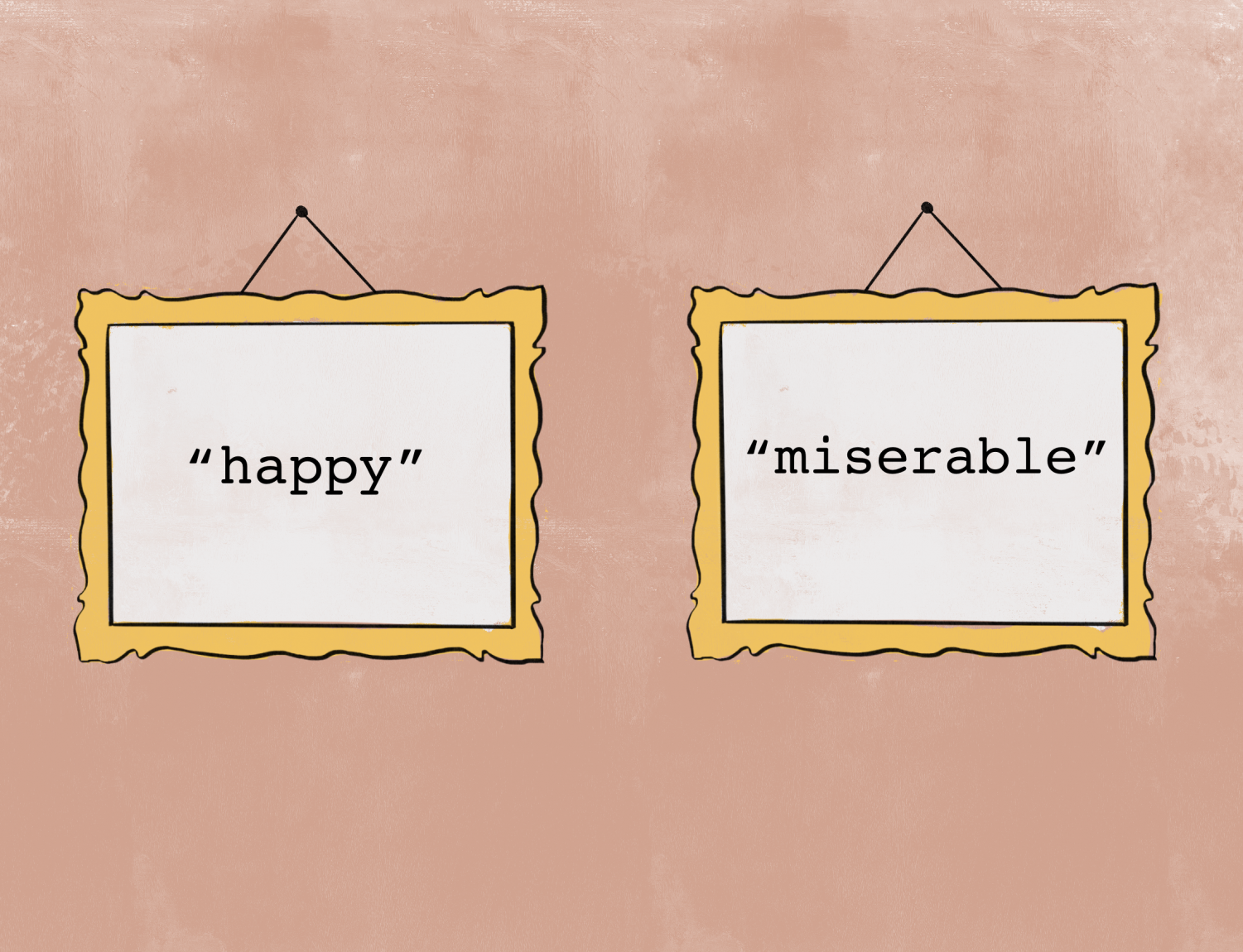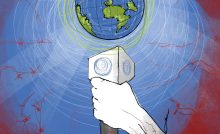Opinion | Art doesn’t have to be miserable to be good


As I sat on my bathroom floor crying one night, I wondered whether it was strange that I listened to “Renegade” by X Ambassadors on repeat to sob to. Because of my deep-rooted fear of possible masochistic tendencies, I took to the most reliable source I could think of to find out what was wrong with me — Google. As it turns out, the tendency to listen to sad music when sad is more universal than you might think.
I am not in fact a sadist — thank you, Google — I just like to validate my own emotions by listening to music that mirrors my emotional state. That being said, if people tend to gravitate toward art that validates and mirrors their own emotions, it could be assumed that we would value pretty much any art that evokes a strong emotion — sad, happy, angry and joyous — equally, right? Wrong. No matter how many different emotions we have, humans are perpetually drawn to sad art. But art doesn’t have to be miserable to be good, folks.
Exactly why we are attracted to sad art prompts what is known as the Paradox of Tragedy, or the idea that we do not pursue actions that cause negative emotions in real life, but we actively seek out art that prompts negative emotions. In fact, some consider tragedy to be “man’s highest art form.” So no, you are not weird for seeking out sad music — superior art, if you will — when you’re upset.
A large factor of this “sad art is good art” mentality is our inherent hard-wiring of negativity bias — a tendency to pay more attention to negative information than positive information. Evolutionarily, humans developed this bias because our ancestors paid more attention to the negative and dangerous facets of a world of survival. Those that were too focused on smelling the roses or admiring the sunsets were eaten by lions — or something like that.
But, I urge you, dear reader, to fight against your negativity bias and seek out happy art. Because, believe it or not, there’s plenty of beautiful art in the world that is not inherently dependent on melancholy. Emily Dickinson’s poem “‘Hope’ is the thing with feathers” is a beautiful example of art void of sadness — art filled with joy and hope. It is inspiring and warrants the same amount of artistic value as Edgar Allen Poe’s “The Raven.”
You may be reading this with a sense of distrust — your evolutionary brain murmuring in the back of your skull that sad subjects and artists just make for better art. If that is the case, let me present to you a list of handcrafted, innately joyous things in this world that make for beautiful artistic inspiration — the genuine smile your mom gives you as you present to her a handmade birthday card for the 10th year in a row or that particular look in the eyes of a couple that just said “I love you” for the first time.
Imagine the prideful glow of parents watching their child take their first steps or the firm embrace of a loved one who has been away from home far too long. Picture soldiers reuniting with their families or the birth of a healthy litter of puppies. Watch the sun rise over the horizon of a cool, clear morning, painting the sky in hues of pink and orange so vibrant that you cannot help but believe that there is something extraordinary about the world we live in. All of those things can and have inspired amazing art. None of those things are miserable.
It is not easy to overcome negativity bias, especially in a world that has so many problems — world hunger, a pandemic, climate change and political polarization, just to name a few. But, this constant exposure to the negative facets of society is just another reason that we need to actively pursue happy art. Those who consistently give into their negativity bias have an increased risk of depression.
There is a very fine line between valuing art that produces negative emotions and enabling depressive tendencies. Beautiful happy art exists, I promise you, and there is value in seeking it out. With that, I’d like to leave you with some lists of happy art in which you can indulge.
Books — “Paradise Lodge” by Nina Stibbe, “Priestdaddy” by Patricia Lockwood, “Pride and Prejudice” by Jane Austen, “The Young Visiters” or “Mister Salteena’s Plan” by Daisy Ashford and “Love in the Time of Cholera” by Gabriel Garcia Marquez.
Movies — “Slumdog Millionaire,” “The Sound of Music,” “Green Book,” “Chicago,” “My Fair Lady” and “All About Eve.”
Art — “You Are Beautiful” by Matthew Hoffman, “Heidelberg Project” by Tyree Guyton, “The Truth Booth” by Hank Willis Thomas, “Ryan Alexiev and Jim Ricks and Street Piano” by Luke Jerram.
Music — “Light My Love” by Greta Van Fleet, “Silvertongue” by Young the Giant, “Sunday Morning” by Maroon 5, “Three Little Birds” by Bob Marley, “Honeypie” by JAWNY and “Life is a Highway” by Rascal Flatts.
It is not the job of art to make us feel sad — it is the job of art to make us feel something, no matter what it is. It is our job to consume art that isn’t miserable, and it is our job to recognize that there is worth in happiness.
But, after all I’ve said, I won’t sit here and forbid myself from ever listening to sad music again. It is OK, cathartic even, to indulge in sad art. But, there has to be a balance. We have to be willing to recognize the value of art that is not inherently sad. There is worth in all of our emotions.
So indulge in art that makes you sad and happy and angry and hopeful because all worthwhile art will make you feel something, as long as you are willing to feel it.
Anna Fischer writes about female empowerment, literature, and art. She’s really into bagels. Write to her at ajf132@pitt.edu.
Recent Posts
SGB addresses concerns about ICE presence on campus, hears SJP lawsuit against administration, approves governing code bill
At its weekly meeting on Tuesday at Nordy’s Place, Student Government Board heard concerns about…
ACLU of Pennsylvania sues Pitt over SJP suspension
The ACLU of Pennsylvania filed a federal civil lawsuit against the University of Pittsburgh and…
Marquan Pope: The ultimate shark
One of the most remarkable things about sharks is that an injury doesn’t deter them.…
Who Asked? // Do we really get a summer vacation?
This installment of Who Asked? by staff writer Brynn Murawski mourns the seemingly impossible perfect…
Notes From an Average Girl // Notes from my junior year
In this edition of Notes From an Average Girl, senior staff writer Madeline Milchman reflects…
Meaning at the Movies // The Power of the Movie Theater
In this edition of “Meaning at the Movies,” staff writer Lauren Deaton discusses her love…

